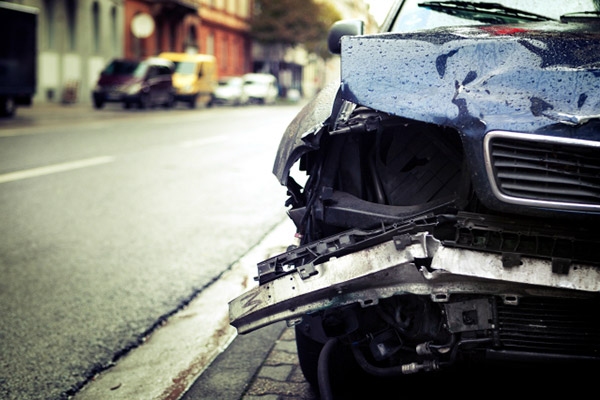The 5 deadliest driving behaviors

We spend a large part of our lives behind the wheel, running up hundreds of miles a month commuting to jobs, running errands and taking pleasure trips.
But many drivers may forget a basic truth: Driving probably puts our lives in greater peril on a day-to-day basis than any other activity.
Five driver activities are more likely than any others to result in fatal accidents, according to statistics from the National Highway Traffic Safety Administration.
These behaviors also pose financial risks, often resulting in an expensive ticket and a corresponding hike in your car insurance rates.
5. Distracted driving (using phone, talking, eating): 6.6 percent of fatal crashes
Distractions are an inevitable part of modern life, but they’re especially dangerous for drivers. In recent years, the Insurance Institute for Highway Safety (IIHS) has sounded the alarm about cellphone usage.
A 2014 IIHS study found that drivers who interact with cellphones have a 17 percent higher risk of crashing. Interestingly, the risk was most associated with reaching for, answering or dialing the cellphone, not actual conversation.
Other distracting activities that pose a major risk include:
- Adjusting a radio.
- Eating and drinking.
- Grooming.
- Interacting with passengers.
Premium increase after infraction: 27 percent (careless driving)
A February 2015 survey by insuranceQuotes.com found that a careless driving infraction can cause your car insurance rates to jump an average of 27 percent.
“The No. 1 step drivers can take is to not use a cellphone — handheld or hands-free,” says Deborah Trombley, senior program manager of transportation initiatives at the National Safety Council (NSC).
4. Failure to yield the right of way: 7.1 percent of fatal crashes
Drivers have an obligation to yield the right of way in certain situations. But these rules are often poorly understood.
According to the American Safety Council, the most misunderstood rule is the need to yield to anything to your right — such as other cars, pedestrians and bicycles.
There are other situations where you’re expected to yield, including when you encounter:
- Pedestrians.
- Emergency vehicles.
- A “yield” sign.
Premium increase after infraction: 19 percent (failure to yield)
Failure to yield could cost you a hefty amount with your insurer.
Trombley says young, inexperienced teen drivers often misjudge gaps in traffic and turn too soon in front of other vehicles.
older drivers are also at high risk of failing to properly yield, due to changes in their vision and cognitive abilities that make it more difficult to handle the complexities of making decisions at intersections.
3. Failure to keep in the proper lane: 8.3 percent of fatal crashes
When a driver is tired or distracted, it’s easy to creep into an adjacent lane, or even to veer toward going off the road altogether. Such lapses can lead to dangerous and even fatal accidents.
New technology may help lower the risk of these types of infractions in the future. Lane-departure warning systems use camera technology to alert drivers when they stray across lane markings.
Premium increase after infraction: 18 percent (driving in the carpool lane)
One way to see your premium increase is to intentionally drive in the wrong lane — such as zipping over into the carpool lane even if you don’t meet the requirements to be there. If the police catch you, you may face a hike in your insurance rates
But even if you veer out of your lane unintentionally and end up in an accident, your rates may increase as well.
There are three aspects to driving without distractions — keep your mind on driving, keep your eyes on the road and keep your hands on the wheel,” Trombley says.
2. Driving under the influence of alcohol, drugs or medication: 13.5 percent of fatal crashes
It’s no secret that the combination of alcohol and driving can lead to disastrous consequences.
In 2013, about 10,000 people were killed in crashes where alcohol was a factor, according to the Centers for Disease Control and Prevention. That represented almost one-third of all traffic-related deaths.
Premium increase after infraction: 92 percent (DUI/DWI)
Driving under the influence is more likely to send your insurance rates skyrocketing than any other behavior, according to the insuranceQuotes study.
There’s ample evidence that someone who has driven after drinking once — and been arrested for doing so — will engage in this criminal behavior again,” says Michael Barry, spokesman for the Insurance Information Institute.
1. Driving too fast: 19.9 percent of fatal crashes
Speeding is a factor in one-third of all motor vehicle crash deaths,” says Russ Rader, spokesman for the IIHS.
If we could address our national speeding problem, it would go a long way toward reducing the 30,000-plus deaths that occur in road crashes each year,” he adds.
Premium increase after infraction: 21 percent (speeding 1-15 mph over the limit)
Get caught speeding, and your insurance company is likely to make you pay. But somehow, the desire to speed outweighs our fear of the consequences.
People usually don’t see speeding as a big deal,” Rader says.
Rader says statistics show a clear link between lower speed limits and reductions in road deaths.
Vigorous and well-publicized enforcement of speed limits is necessary if states hope to reduce speeding, Rader says.
